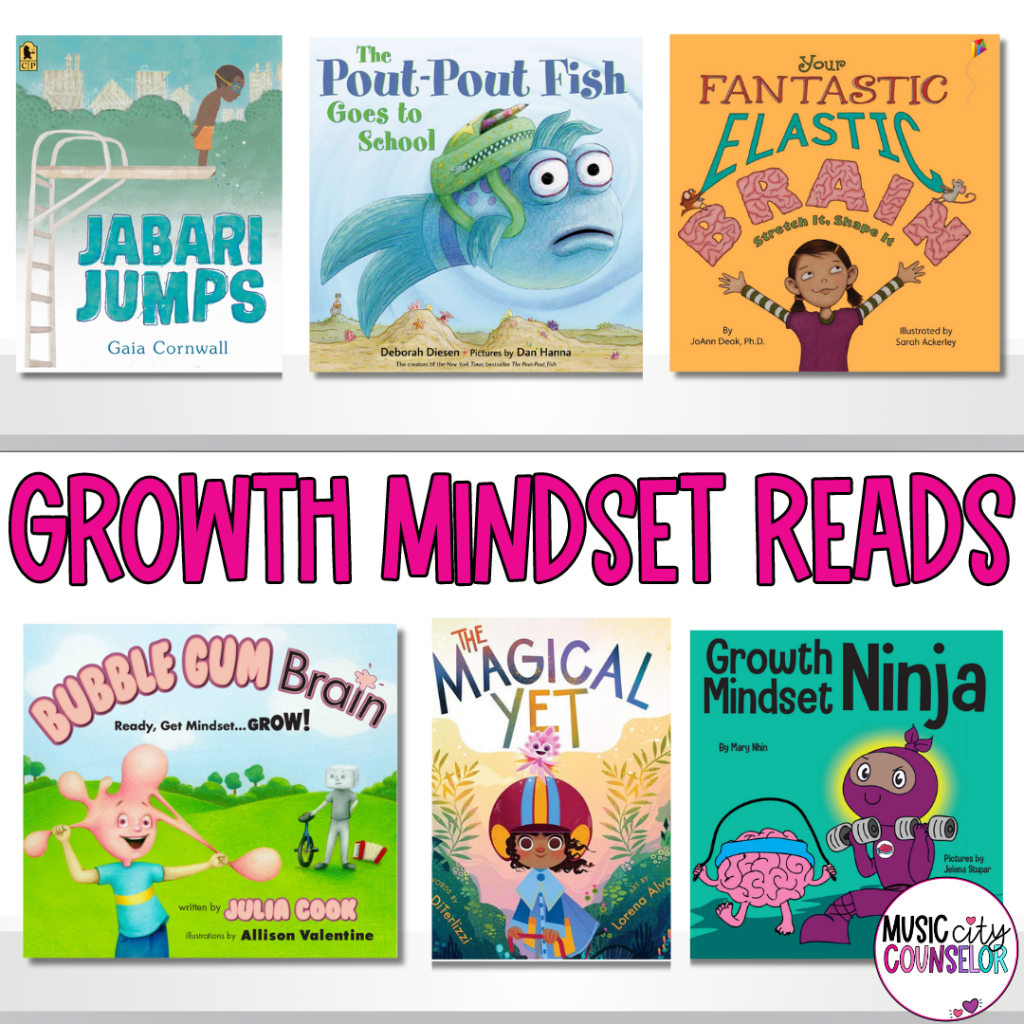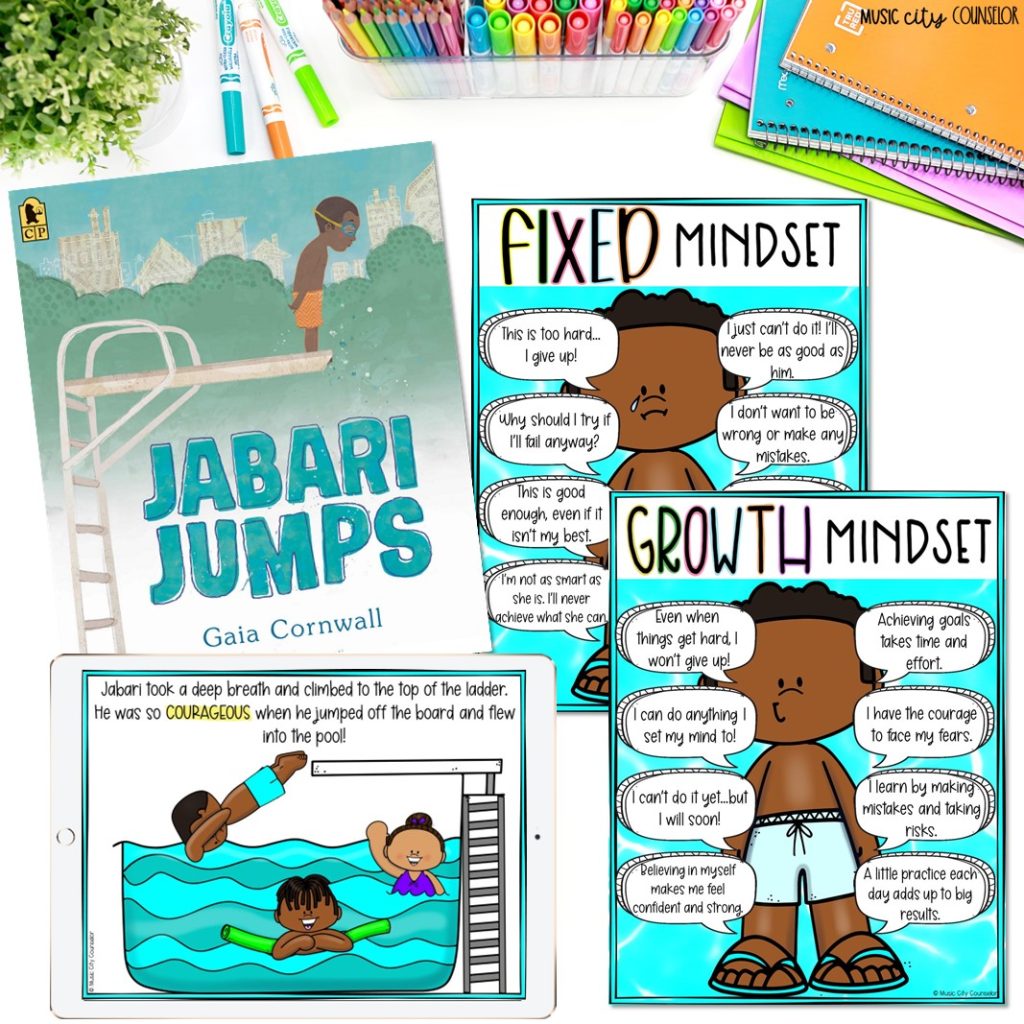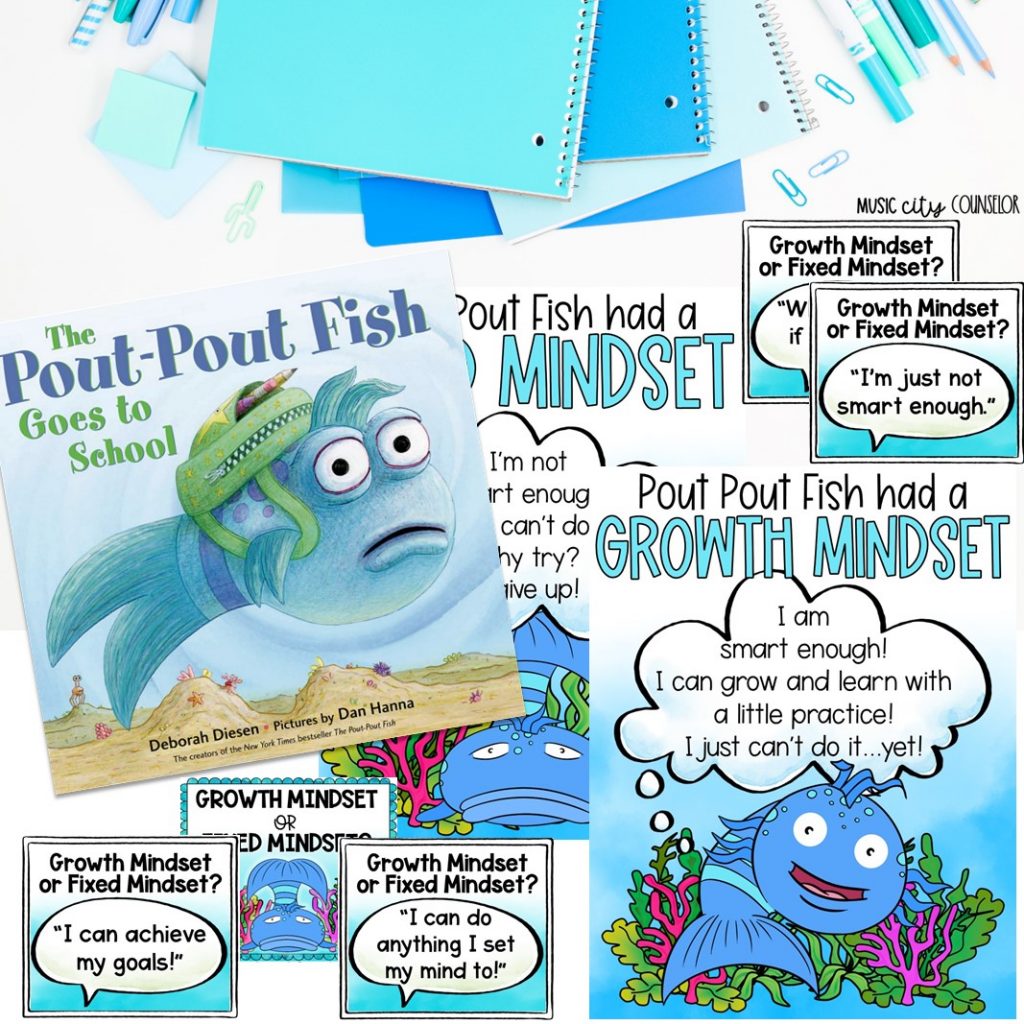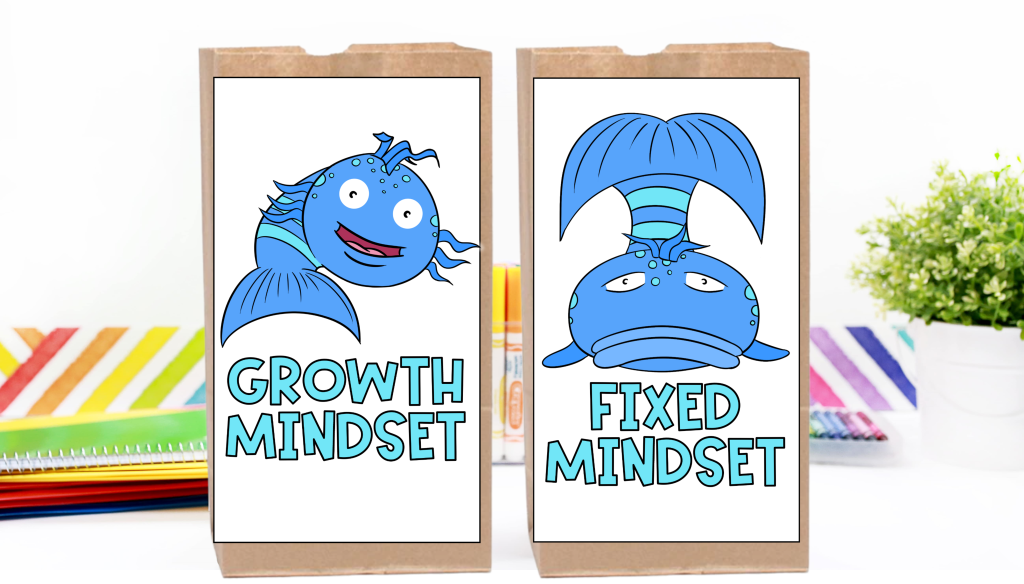
Hey y’all! Thanks so much for stopping by. My name is Laura and I am an Elementary School Counselor turned Curriculum Writer. At my precious school in Nashville, TN, 97% of my students were living in …

Our “mindset,” or the way we think about ourselves, MATTERS! It controls how we feel, how we act, and the choices we make. Dr. Carol Dweck’s ground-breaking research on growth mindset has taken the education and mental health fields by storm (deservingly so)!
Growth mindset is the belief that abilities and intelligence can be developed through dedication, effort, and continuous learning. It contrasts with a fixed mindset, which assumes that skills and traits are innate and unchangeable.
For more information about growth mindset vs. fixed mindset, check out my blog post!
I begin just about every classroom guidance lesson, no matter the topic, with a storybook. Stories engage students, are memorable, relatable, and make complicated concepts easier to grasp!
Here are 6 of my favorite story books that teach growth mindset:

(Amazon Affiliate Links)
Next, I’ll review 3 of my favorites, and offer companion lessons to go along with them!
I remember the feeling like it was yesterday of being a little girl in the suburbs of Chicago, cautiously climbing the steps to the top of the high dive at our community pool. The cold wet steps under my feet, and the amazing bird’s eye view of the pool are forever etched in my memory!
“Jabari Jumps” by Gaia Cornwall captures this experience so beautifully by telling the story of a little boy who overcomes his fear of jumping off the high dive. Jabari’s story is so relatable for children because even if they haven’t jumped off a high dive yet, they can think of something in their life that they faced with courage, bravery, and a growth mindset. I also love that the main character is a child of color!

After reading the book, I use this lesson to relate Jabari’s experience on the diving board to the concept of growth mindset. At first, Jabari had a fixed mindset. He let his doubts and fears get the best of him and decided he was “too tired” to jump. Maybe he would try to jump tomorrow instead. However, with a little time and a lot of courage, Jabari adopted a growth mindset that helped him believe in himself and face his fear. He stood bravely at the edge of that diving board, pushed his fears aside, and knew he had what it takes to make the great leap!
My students love the presentation, posters, worksheets, and coloring pages that come with this lesson! I display the posters in my classroom and students refer back to them all year long. I love how this book and lesson make a relatively complicated concept like growth mindset so easy to relate to, understand, and remember for the little ones!
“The Pout Pout Fish Goes to School” by Deborah Diesen tells the story of Mr. Fish who is very nervous about starting school for the first time. As he travels from class to class, he realizes that he doesn’t know how to write his name, draw shapes, or do math like the other students do. He feels very discouraged and convinces himself that he isn’t smart enough – might as well just give up.
Thankfully, Mr. Fish eventually finds himself in the “Brand New Fish” class and his new teacher, Miss Hewitt, assures him that he IS smart and with practice, time and effort – he WILL learn! I love relating this part of the story to “the power of yet” and showing how it is totally okay that Mr. Fish didn’t know how to do things that he hadn’t learned yet. Mr. Fish’s transformation from a fish full of doubt, uncertainty, and nerves (fixed mindset) to a confident, self-assured, and optimistic fish (growth mindset) is super relatable and easy to grasp for students!

After reading the story, I use this lesson to reinforce these concepts to my students. My little friends’ favorite part of this lesson is the interactive sorting game that asks them to choose a card, read the statement aloud to the class (or have the educator read it aloud, if necessary) and then sort the card into either the fixed mindset bag or the growth mindset bag. This activity also makes for a quick and easy informal assessment that shows me how well my students understand growth mindset vs. fixed mindset!


Julia Cook’s “Bubble Gum Brain” offers another simple and understandable approach to growth mindset! She uses a boy named “Bubble Gum Brain” to represent growth mindset and a boy named “Brick Brain” to represent fixed mindset.
Bubble Gum Brain loves to stretch and expand, and understands that mistakes help him grow. He loves to try new things, practice, and learn each day. When faced with challenges such as riding a unicycle, playing accordion, painting, and doing his math homework, he understands that he can’t do them well…YET…but with practice, time, and effort, he will improve and grow!
Brick Brain, on the other hand, believes that things are just the way they are and aren’t going to change. He worries about failure, gives up easily, and believes that things are “just too hard” and not worth the time and effort to try.
Julia Cook books are often a bit wordy, metaphorical, and complex for my mostly English Learner/high poverty population, but I truly believe this one is a WIN. The visuals of the stretchy bubble gum vs. the hard and inflexible brick are relatable and understandable for my students (especially when I incorporate realia!). I also love how Julia used common, real-word scenarios to compare the two boys’ mindsets and approaches in each situation!
Be sure to check out my companion lesson to this story for an engaging presentation, interactive sorting game, crafts, posters, and more!
What are your favorite stories and resources to teach growth mindset to your students? Please comment below – I’d love to hear from you!

| Cookie | Duration | Description |
|---|---|---|
| cookielawinfo-checkbox-analytics | 11 months | This cookie is set by GDPR Cookie Consent plugin. The cookie is used to store the user consent for the cookies in the category "Analytics". |
| cookielawinfo-checkbox-functional | 11 months | The cookie is set by GDPR cookie consent to record the user consent for the cookies in the category "Functional". |
| cookielawinfo-checkbox-necessary | 11 months | This cookie is set by GDPR Cookie Consent plugin. The cookies is used to store the user consent for the cookies in the category "Necessary". |
| cookielawinfo-checkbox-others | 11 months | This cookie is set by GDPR Cookie Consent plugin. The cookie is used to store the user consent for the cookies in the category "Other. |
| cookielawinfo-checkbox-performance | 11 months | This cookie is set by GDPR Cookie Consent plugin. The cookie is used to store the user consent for the cookies in the category "Performance". |
| viewed_cookie_policy | 11 months | The cookie is set by the GDPR Cookie Consent plugin and is used to store whether or not user has consented to the use of cookies. It does not store any personal data. |